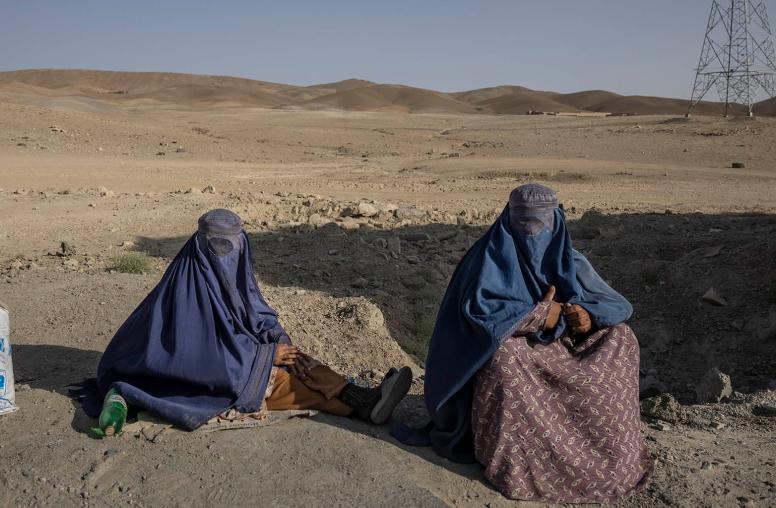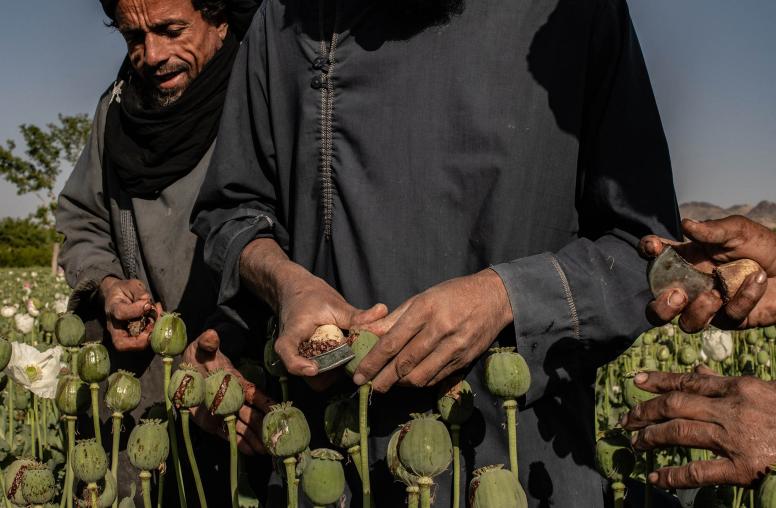How China Responds to Instability on Its Periphery: Lessons from Afghanistan and Myanmar
Beijing’s response pattern may diminish its ability to influence outcomes and lead to instability on its borders.
China’s timid rhetoric and underwhelming actions vis-à-vis recent political upheaval in two different neighboring countries belie the image of a confident and assertive Beijing. What explains this apparent paradox? Despite the ruling Chinese Communist Party’s outward bravado, combined with unprecedented expansion of China’s regional and global activities and presence, Xi Jinping and his Politburo colleagues remain wary when it comes to taking risks abroad. Certainly, when China believes its interests are being directly attacked, such as in recent disputes with Australia and India, the state has opted for riskier, more aggressive moves. But where Beijing is not a direct party to the conflict, caution can override its willingness to take action that would show its hand or put China in a situation where it is not guaranteed to avoid a messy exit, à la the United States in Afghanistan.

This risk aversion manifests itself in a discernible pattern of responses to extra-constitutional changes of government in Afghanistan and Myanmar. This includes (1) downplaying these national crises as well as the scale of chaos, (2) preaching noninterference while it interferes and (3) working from the sidelines.
On the one hand, Beijing works to proactively maintain border stability and recognizes the growing insecurity on its borders, as illustrated by the recent passage of the Land Borders Law. On the other, it adopts a three-part, more reactive approach to crises in countries around its periphery intended to limit China’s involvement and hedge its bets. The irony is that Beijing’s reluctance to act boldly in crises in its neighborhood may end up exacerbating or prolonging instability rather than contributing to national stabilization and peacebuilding efforts.
Crisis? What Crisis?
First, China tends to officially downplay the magnitude of political change and scale of chaos in each country in the hope that this will nurture stability. For instance, Beijing failed to condemn the February 2021 coup in Myanmar, or even label it as such, with the state-run Xinhua News Agency infamously calling the military seizure a “major cabinet reshuffle.” Similarly, following the August 2021 Taliban takeover, Chinese officials vaguely described Afghanistan as undergoing “major changes” and a Global Times article referred to it as a “political reshuffle.”
As it minimized the takeovers, China moved to engage the junta in Myanmar and the Taliban, providing implicit recognition for both groups. Although there has been some interaction between China and Myanmar’s ousted National League for Democracy (NLD) government, Beijing has taken steps to lend legitimacy to the junta: calling Gen. Min Aung Hlaing Myanmar’s “leader” in June and labeling the State Administration Council (SAC), the junta’s governing body, Myanmar’s “government” in August. In Afghanistan, China has welcomed Taliban statements on developing relations with Beijing as well as the formation of an interim government, arguing that it “put an end to the anarchy in Afghanistan.”
Noninterference, Chinese Style
Second, Beijing preaches noninterference while nevertheless practicing interference (albeit in low-profile ways). The principle of noninterference in the internal affairs of other countries has been a central tenet of Chinese foreign policy since the promulgation of the so-called Five Principles of Peaceful Coexistence in 1954. Unsurprisingly, Beijing’s recent statements on Afghanistan and Myanmar have included familiar refrains about noninterference, with China insisting that both crises are the internal affairs of these countries and avowing China’s respect for the two countries’ sovereignty.
On its face, China’s noninterference principle poses a potential barrier to increased engagement, but it is an imprecise concept that depends on one’s point of view. Arguably, China has already interfered by providing de facto recognition to the Taliban and Myanmar junta, thereby lending legitimacy to one side of each conflict over the other. Chinese statements on Myanmar may claim to support “the people’s choice,” but Myanmar’s National Unity Government (NUG), a parallel government founded by ousted elected leaders, warned that Chinese efforts to legitimize the SAC “risk undermining people to people relations between the two countries.” And while Beijing opposes high-profile actions like sanctions, it is undoubtedly working to influence the crises, as demonstrated through its “strategic exchange” with Russia on Afghanistan and its efforts to shape ASEAN activities in Myanmar. Moreover, espousing the importance of noninterference can both justify China’s hands-off approach and serve as a warning for other international actors whose involvement Beijing may want to constrain or shape.
Sideline Strategies
Third, China avoids taking center stage and instead works from the sidelines. China could opt to become more involved in managing these crises, particularly given its past attempts to engage in conflict mediation in Afghanistan and, more significantly, Myanmar. Rather than influencing ASEAN efforts, Beijing could act as an intermediary between the NUG, junta and ethnic armed organizations (EAOs). This would also require China to increase engagement with the NLD-dominated NUG and seek to influence the group directly, instead of spending time encouraging the NLD to distance itself from the NUG.
In Afghanistan, Beijing has repeatedly called for the international community to guide the Taliban in its transition and development of an inclusive political structure. This includes the Shanghai Cooperation Organization (SCO), with Xi in September emphasizing the need for regional countries to help Afghanistan and promoting the use of the SCO-Afghanistan contact group to do so. But other than providing some aid and reiterating the importance of an inclusive government, it is unclear what concrete steps China is willing to take as the interim government excludes women and offers minimal positions for ethnic minorities.
Additionally, Beijing’s engagement with the junta in Myanmar and the Taliban in Afghanistan does not mean that it is willing to push for rapid formal recognition of either on the international stage. Looking at the United Nations, China and the United States reportedly brokered an agreement to postpone discussion in the U.N. Credentials Committee on the diplomatic status of Myanmar’s junta until after the General Assembly convenes. The committee, whose members include the United States and China, likewise postponed a decision on Afghanistan’s U.N. representative.
Beijing Blowback?
Far from benefiting China, Beijing’s reluctance to act boldly in each country may be counterproductive — running counter to Chinese interests and exacerbating domestic tensions rather than contributing to stability. The post-coup violence in Myanmar has already adversely impacted Beijing, with Chinese factories coming under attack and artillery shells hitting its territory. Violence in the country continued to escalate after the NUG launched a “people’s defensive war” in September, a month after the junta announced its caretaker government.
The Taliban takeover likewise endangers stability as the group struggles with dual humanitarian and economic crises and commits human rights abuses against women and minorities. Of particular concern to Beijing is the threat from terrorist groups such as the Islamic State-Khorasan (IS-K), which has claimed responsibility for multiple attacks since the U.S. withdrawal in August. Establishing ties with a Taliban government does not guarantee protection from terrorist attacks on China or Chinese citizens and property overseas. This is illustrated in Pakistan where China has been targeted by militant groups, as seen in the August 20 attack on a vehicle carrying Chinese nationals in Gwadar. Moreover, IS-K’s decision to identify the ethnicity of the bomber in the October 15 Kunduz attack as Uyghur serves as a further warning to Beijing.
To be sure, China’s approach to the crises is not set in stone and will evolve as each situation changes. For now, Beijing has decided to play it safe, and will likely proceed with caution. However, if instability in either country intensifies and threats to Chinese interests increase, Beijing may opt to elevate its involvement. China could put some of its past conflict mediation experience to work to mediate between the NUG, junta and EAOs and, with Pakistan’s good offices, encourage the Taliban to engage in national reconciliation. The danger in this is that by the time China realizes its strategy is not working — and may even be contributing to growing chaos at its borders — the situation may be far more serious and far more difficult to address. Furthermore, as these crises join the string of precarious situations already on its periphery — from territorial disputes in the South China Sea to nuclear tensions on the Korean Peninsula — China may not have the capacity to step up its engagement to reach the new level of the Afghanistan and Myanmar crises.
A Reactive Power
China’s prudent, pragmatic and underwhelming responses to the 2021 extra-constitutional political transitions in Afghanistan and Myanmar should come as no surprise — Beijing often works with whomever holds power regardless of how they attained it. Characterizing these crises as mere “reshuffles” paves the path for engagement, which can provide opportunity to protect China’s interests, or at least ensure they are heard. Moreover, Beijing sees no apparent contradiction in loudly proclaiming its adherence to the principle of noninterference, while quietly interfering. As Beijing works from the sidelines and refrains from pushing publicly for international recognition for the junta in Myanmar or the Taliban in Afghanistan, this gives China leeway to avoid becoming too entangled, and perhaps even miscalculating by backing the wrong group.
Despite this pattern of Chinese responses serving as impediments for greater Chinese involvement in adjacent countries, there is still opportunity for Beijing to increase its influence in Myanmar and Afghanistan. But what China’s cautious and subdued response thus far shows is that despite projecting an image of confidence and assertions of a more proactive foreign policy under Xi, China in many ways remains reactive. Rather than stepping in to quickly impact the serious political turmoil in Afghanistan and Myanmar, China seems willing to wait and let things play out, attempting to keep its options open and addressing problems as it must. The problem with this approach is that it diminishes Beijing’s ability to influence the outcome of the situation and, with it, maintain stability on its periphery.
Alison McFarland is a research associate for the China and North Korea programs at the U.S. Institute of Peace.



